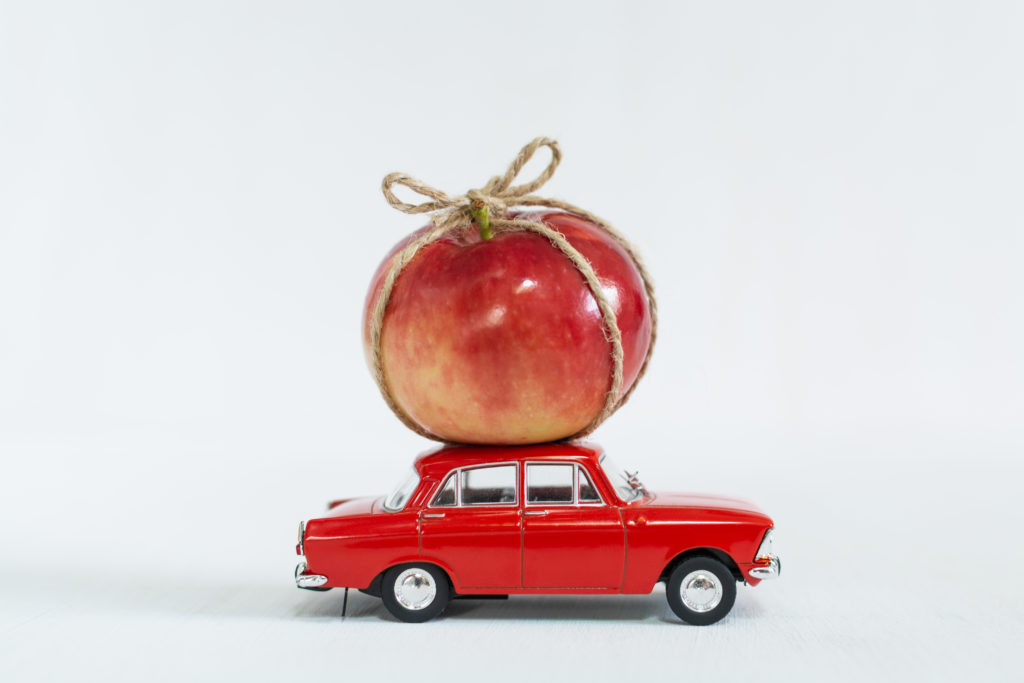
You've got to give it up for Apple. At a moment when most tech companies are struggling to stand out, innovate, and remain relevant, Apple consistently checks all those boxes.
Yesterday was their now-famous WWDC event – Worldwide Developers Conference – an entire week of tech developments from the wizards of Cupertino. As is always the case at these innovation extravaganzas, Apple's CEO plays a role in new product introductions. That post continues to be held by Tim Cook (whose new avatar profile picture appears below) who replaced Steve Jobs more than a decade ago. He was on hand at WWDC 2022 for introductions, before turning things over to his executive team to walk us through “what's new and what's next” for Apple this year – and beyond.
 Depending on whose wrap-up of yesterday's opening festivities you watch or read about, chances are you'll hear about iOS 16, the updated iPhone software slated to debut this fall. (Good news: you'll now be able to edit and recall texts.)
Depending on whose wrap-up of yesterday's opening festivities you watch or read about, chances are you'll hear about iOS 16, the updated iPhone software slated to debut this fall. (Good news: you'll now be able to edit and recall texts.)
Or the new MacBook Air with cool new features, but also a monster price tag, starting at $1,200.
Then there's Apple watch OS 9, with more watch faces and better health-tracking features. (Maybe good news: you'll be able to monitor sleep stages and your history of irregular heartbeats, probably around ratings time.)
But the big news that caught my attention – and something you should be aware of – is the newest edition of Apple CarPlay which has now morphed into an entire ecosystem coming to an array of auto manufacturers and their line of vehicles for 2023. As we've discussed on this blog, this is a friendly takeover of a vehicle's entire dashboard and operating system.
Apple CarPlay doesn't just control your media and entertainment while you motor along, but the vehicle's driving metrics, fluid levels, climate control and every other key systems you wish to see displayed.
And CarPlay is becoming mainstream in the automotive community. How many OEMs – auto manufacturers – are already signed up for Apple's “next gen” CarPlay? Take a look:
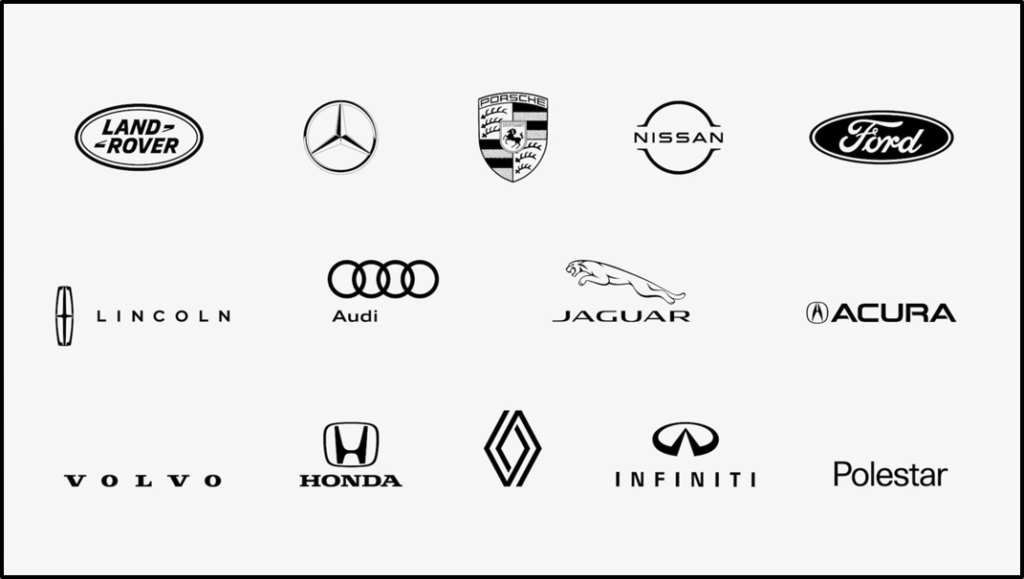
Suffice it to say, these are mega car and truck brands ready to hand Apple the keys to their vehicles' entire instrument panels and screens, both foreign and domestic. It's an excellent start for a tech initiative that's been around for only eight years, and was met with skepticism when first introduced.
The Apple CarPlay platform has been gaining in popularity among consumers, too, according to our core fans from this year's Techsurvey 2022. When we asked the 12% of respondents who bought or planned to purchase a new vehicle this year about their must-have features, CarPlay hit an all-time high. Now, more than one in four say Apple's dashboard system is a “must have.”
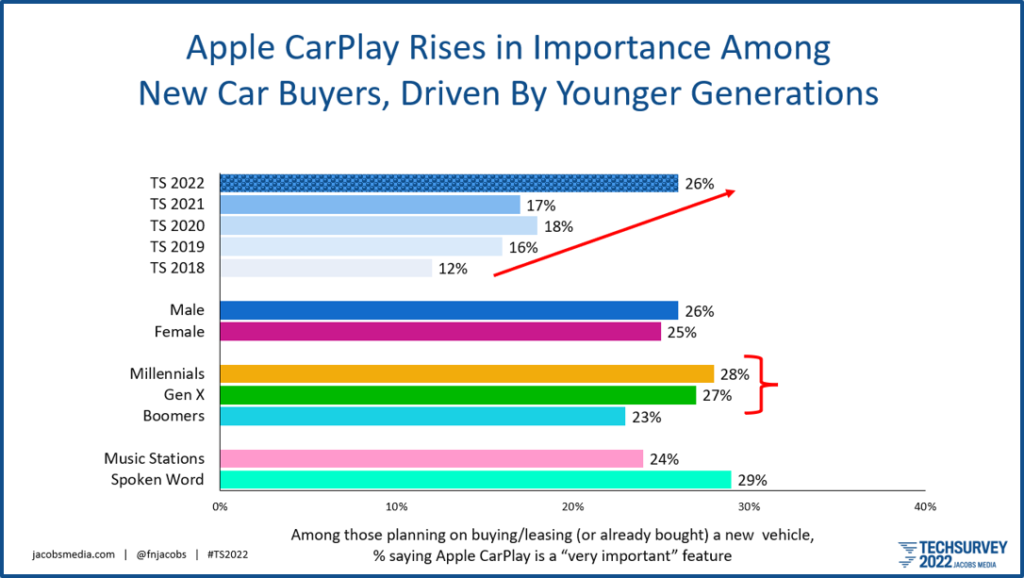
Many of these folks are undoubtedly Apple “fan boys” and “girls” – iPhone carrying devotees who love having the look and feel of their phones on their dashboards. And that's what makes the demand for CarPlay all that more impressive. Apple owners – especially those with iPhones – love the ubiquity of the brand throughout their tech lives.
But thinking about CarPlay as a mirror of your iPhone no longer does justice to this in-car platform. The bigger trend here is the “screenification” of your car, a phenomenon we've talked about over the past few years from our CES visits. More and more, the car dashboard is becoming one big screen – or several of them – arrayed across the width of many newer vehicles.
There are many WWDC 2022 summary posts on the Internet today, wrapping up the goings-on at the WWDC. But if you'd like to check out one that zeroes in on CarPlay, it is linked here from the Cult of Mac. Writer Leander Kahney breaks down the key features in this next-gen system that controls the vehicle's media – including radio.
Note the size of the screen below. And more importantly, there's a second screen below dedicated to the vehicle's infotainment system. That's the part broadcasters have been wondering about:
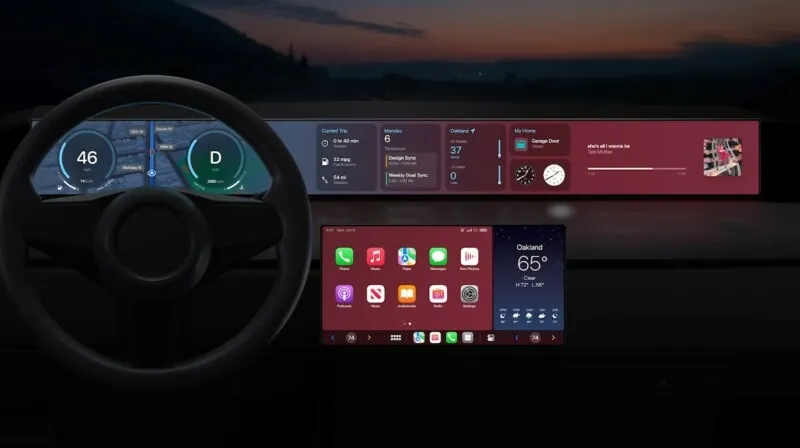
It's difficult to make out the icons on the bottom row of the sub-screen, but they are:
Podcasts, Apple News, Apple Books, Radio, Settings
Ostensibly, you'll be able to select which icons appear on this screen, including apps for your favorite radio stations.
But the “Radio” app is what obviously grabbed my attention. Here's a close-up of the icon and how it's labeled:
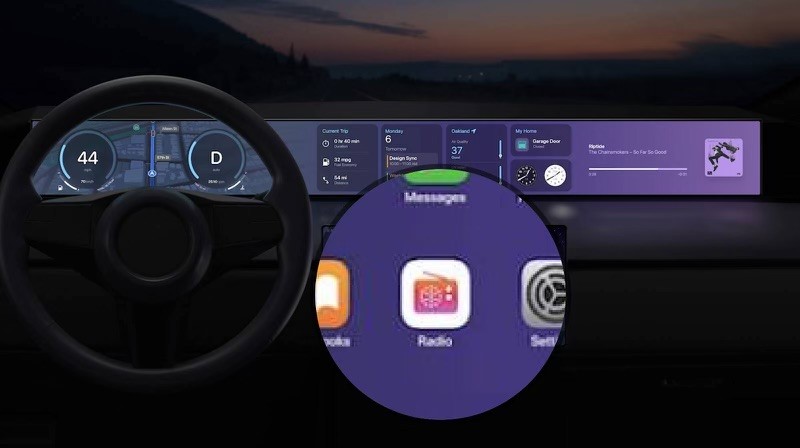
In their summary of CarPlay's features at WWDC 2022, the “Radio” app actually got a moment of spotlighting from Emily Schubert, Apple's senior manager of car experience engineering. Here's what she said about radio:
“Deep integration with the car’s hardware lets you tune your car’s radio or change your temperature without ever leaving the CarPlay experience.”
That would indicate radio stations will be sourced from the vehicle's tuner, and not an app like TuneIn.
The video below is a two-minute compilation of the expanded CarPlay, and the mention for the “Radio” app occurs within the first :25.
One last thing – how will a music radio station be displayed on the new Apple CarPlay? Fortunately, we have a glimpse, courtesy of 90.5 KSJS, better known as “Ground Zero Radio.” It's the student-run radio station at San Jose State University, obviously a favorite of the Cupertino staff. They g0t a nice visual shout-out at the WWDC, and here in JacoBLOG. The song is “Auto” by Wave Racer:

The changing dashboard of the “connected car” has a long road ahead of it. Google's version of their integrated dash will undoubtedly be similar but different than Apple's.
One thing is clear. The automakers are throwing in the towel when it comes to their own development of these technologies – apps, infotainment, maps, and all the other things each individual OEM was in the process of creating themselves.
This form of technological “consolidation,” particularly as it relates to Apple and Google, signals a whole new interface for consumers in their cars. For radio broadcasters, the days of two knobs and six presets are long gone, of course, but the medium appears to be well-represented in Apple CarPlay.
So far, so good.
Thanks to WCSX's Jim O'Brien and Reid Jacobs.
- You've Got A Face For Radio - April 18, 2024
- What's Your Radio Station's Response To AI? - April 16, 2024
- Calling All Stans - April 15, 2024





I’ve said it before and I’ll say it again: Radio needs to stop acting like it is entitled to a spot on the dashboard, and it needs to earn that real estate. Apple’s Music app (not the streaming service) has a “Radio” function where it aggregates streams for access through the app, which could easily make Apple the gatekeeper for what stations are available to drivers/passengers in the future, regardless of what’s on the AM/FM dial in the area.
With the proliferation of smart speakers and WiFi/cellular, how many non-industry people have actual radios in their home? How many average people listen to radio through a stream/app rather than a radio? Can we predict confidently that AM/FM radio will still be around and dominating in 10 years, or will it just be streaming-only stations in the car?
The selection of KSJS for the official preview made me wonder just how many broadcast stations the “average” employee there listens to. Granted, I do think that Apple deliberately wanted to avoid showing any hint of favoritism to a single operator (e.g., iHeart or Cumulus). And, I’d be truly surprised if a lot of folks there *don’t* listen to, at least, either KCBS or KQED. Still, part of me would’ve liked a station such as KRTY being shown in that preview–despite, or perhaps even because of, its sale. (BTW, it looks like KSJS is indeed strong enough to reach Cupertino, Sunnyvale, and maybe even Mountain View with a good signal.)